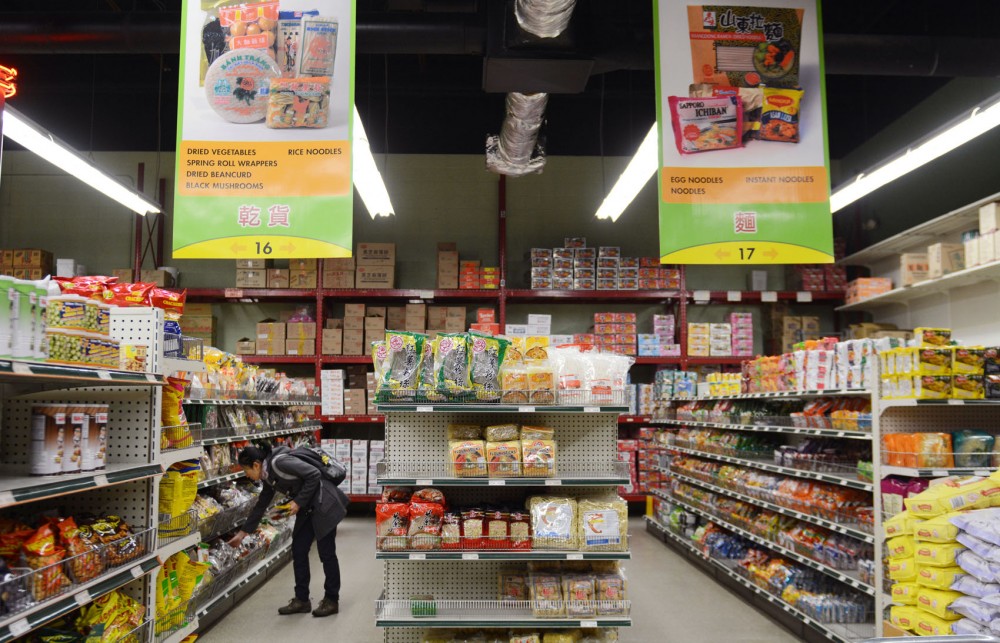Asian grocery stores can be totally overwhelming to those used to hitting up the Cub Foods international aisle. You may find yourself saying, “That squid doesn’t have a label on it!” or “There’s a whole aisle of soy sauce, but I absolutely can’t find the Doritos!”
But for those with the time to learn, these fooderies that dot the Twin Cities can be a pot of gold for cheap and delicious meals you can’t find anywhere else.
Asian grocers are different from typical U.S. grocers because of their all-encompassing specialty and the assumption, made in most parts of the world outside of the U.S., that customers have a desire to make their own food rather than open a box and stick it in the microwave. Sure, these stores offer a ton of instant noodles, awesome candy and premade pot stickers, but their real treasure comes in their diversity of ingredients.
“[Asian cooking] is really not that hard if you grow up around it,” says Winson Ch’ng, a 2005 University of Minnesota graduate in bioproducts marketing and management and a manager at United Noodles in the Seward neighborhood.
United Noodles is the largest Asian grocery store in the Midwest, according to the store’s literature.
“Food like spaghetti may be easy to make for Americans, but for me just moving here, I found it really difficult,” Ch’ng said. “You just need some experience with it.”
We asked Ch’ng to offer tips for Asian grocery newbies looking to get the most out of their next run for vittles.
Start with a simple recipe
Recipe shopping is a popular gateway into Asian groceries. According to Ch’ng, the day after a popular cooking show makes mention of a particular Asian dish, it’s not uncommon for demand to spike so high that the store will experience a dent in its inventories of related ingredients.
Cooking shows and a forest of Internet recipes aside, sometimes the clues to good dishes are right on the label.
“A lot of times, if you look at the back of ingredients, they’ll have small little recipe — basically, what you can do with the ingredient and how you can do it,” Ch’ng said. “Doing that, you start to get more adventurous and start making the sauce on your own. ‘I like this so much, why don’t I just make this in a bigger batch?’”
Cater to your taste
In an Asian grocery store, you’ve got more than just soy sauce and Sriracha to choose from. At first, it may be hard to tell, but once you start going, the differences between different varieties and flavors of the same product will become clearer. Different countries have slightly different ideas for the best ways to do things.
“Not many Asians actually like Kikkoman [soy sauce],” Ch’ng said, “and that’s more of a Japanese brand anyway, so Chinese cooks will look for something different.”
Ask for help
If you need a recipe or can’t figure out where an ingredient is located, you should always feel free to ask an employee, Ch’ng said.
“I’ll run back to the office and print a recipe for a customer if they need it,” he said. “It’s easy to get.”
The following items can be found for a total of less than $20 and are all it takes to make a delicious chicken pad thai:
Rice stick noodles
Pad thai sauce (jar)
Peanut satay sauce (jar)
Shallots
Garlic
Kaffir lime leaf
Green onions
Eggs
Limes
Cilantro
Chicken








